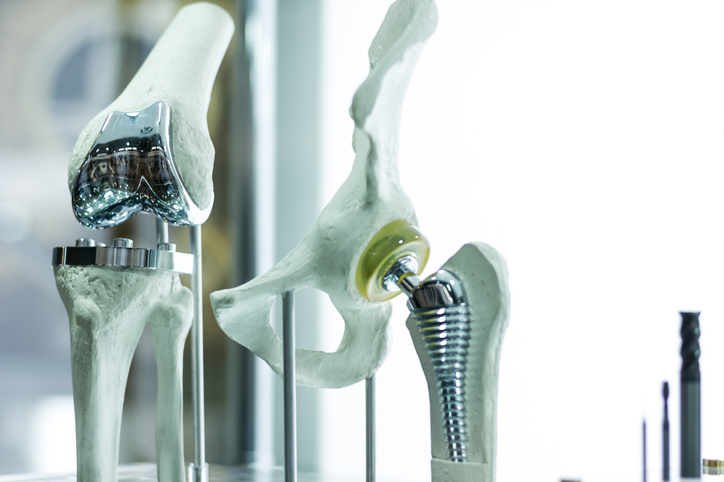Despite the Complexities, Implant Order Automation Can Lead to Cost Savings

Traditionally a manual task, health-care supply chain ordering has largely become automated, with greater efficiency and more streamlined processes among the major benefits. However, one area that has remained particularly reliant on manual processes is implant ordering.
Recently, there’s been a push to bring automation into the space. A group of about 20 health-care and industry leaders and supplier and provider organizations collaborated to identify potential strategies, practices and solutions to do so. In July, Global Healthcare Exchange (GHX) published the results of this supply chain stakeholder collaboration in an industry-first guidelines document, the Consignment Implant Order Automation Guide.
What has been the holdup in automating implant ordering? Complexity, say Chris Luoma, senior vice president and chief strategy officer at GHX, and Ryan Rotar, director of ERP solutions at North Carolina-based UNC Health.
Defining Complexity
Within the health-care realm, investments in automation and technology have generally been limited to broad supply chain platforms within ERP systems, Luoma says. These have predominantly been focused on finance, labor management or human resources.
“In the clinical setting where these implants get deployed, the biggest technology investments have been in the electronic medical record, which is around clinical documentation, patient safety and reimbursement,” Luoma says. “So, from an investment in automation and technology standpoint, the implantable supply chain hasn't been at the forefront of thinking, and yet it's a critical component.”
And it’s complex. The term “implants” is broad-based: It can pertain to cardiac, orthopedics, ophthalmology and other areas where medical devices and products are implanted. Within each specialty, there is even more complexity.
The implant ordering process is typically one of human connection, involving sales representatives and medical staff, and doctor preferences, as well as documentation.
Often, there is no one standard process. For example, for a knee replacement, a total knee will come in a package with a small number of parts, Luoma says. Other procedures require having a large stock of parts on hand: “You pick out what you need to put the bone back together during surgery,” he says. “Those parts will be different for me than for a sixth grader or a 7-foot NBA star.” This lack of standardization makes it difficult to simplify the automation ordering process.
Additionally, physicians may have different brand or part preferences. There could be five doctors doing a particular surgery, with none using the same implants.
Due to this, few organizations in the implant space have been able to manage a par or perpetual inventory level, Luoma says. They tend to use multiple inventory methodologies, and ordering is dependent not only on the relationship between a provider and a manufacturer but on such factors as “the inventory needed tomorrow and what’s on hand.”
There’s also not a lot of consistency, “although that’s where health-care organizations are trying to go,” says Rotar, a member of the guidelines committee. “So, if you look at it through that lens, each supplier and each product line is its own opportunity for automation. That is another reason why implant automation has not been addressed previously. It's a large undertaking … it's quite daunting.”
Much of the information that could improve the implant ordering process is “trapped in disparate silos,” Rotar says. “So, part of this need is bringing in automation to create data that ultimately creates the insights (into ordering and inventories). Are we using the right things based on clinical decisions we’ve made? Are we using the right amounts of things? Do (our needs) ultimately reach the manufacturers’ production and supply chains so that they can be more efficient as well?”
Getting Started
The Consignment Implant Order Automation Guide details a three-phase process — planning, automation and ramping up — for automating implant ordering. It defines terminology and breaks down implant ordering into four subtypes — bill only, bill and replace, waste only and replenish only — with recommended practices and checklists for each area.
The goal is “to simplify yet maximize the automation potential,” the guide states, with benefits including improving transaction accuracy and order transmission and reducing price discrepancies, as well as administrative tasks and costs.
Automation removes the time spent to manually conduct the tasks, freeing clinicians, nurses and other health-care personnel to focus on patient care. “Health care doesn’t have the luxury of having a supply clerk who’s solely dedicated to this work,” Luoma says.
Additionally, according to Rotar, automation uses generated data to make more informed decisions and “do better demand planning for case volumes and even demand matching for the correct patient.”
An integral part of initiating implant ordering automation is to first establish a baseline or commonality among the organization and supplier partners, says Rotar, adding that UNC Health has started on the journey. “That’s a good place to start — and that's what we did,” he says. “Then, utilizing the guidelines, you can start weaving in technology that you likely already have to bring improvement to that space.”
For health-care organizations, getting started — or knowing where to start — can be overwhelming. “You don't have to have a particular technology,” Rotar says. “It doesn’t have to be a specific implant vendor. It doesn’t have to be in the operating room. It can be any of these areas where you can bring technology to the process regardless of what it is.”
It’s also important to acknowledge the process is a journey, Luoma says. “(Automation) is not a silver bullet,” he says. “It is the first step in a journey — and really, the end state isn’t just automation. It is automation creating the data that can then help us decide: Is this the right thing for the right patient? And are we going to get the best outcome and in the most efficient manner?”


